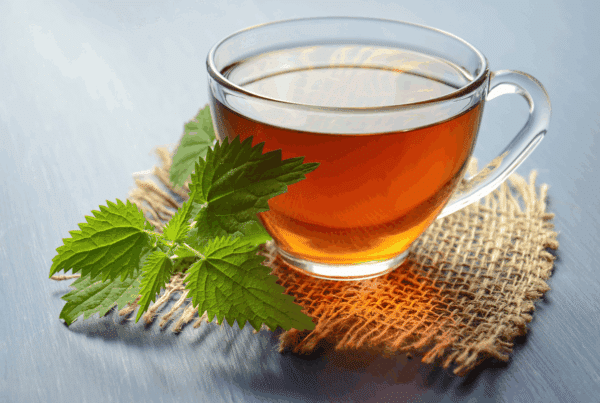Asian cuisine encompasses a wide range of culinary traditions from different countries in Asia, each with its own distinctive flavors and food preparation techniques.
Their dishes are often characterized by a wealth of spices, including ginger, garlic, hot pepper, curry, turmeric and many others.
Spices are used to add complexity and flavor to the dish. Sweet, sour, salty, spicy and bitter are often combined. This concept of flavor balance is known as "Wu Xing" in Chinese cuisine, "Umami" in Japanese cuisine and "Ayurveda" in Indian cuisine.
Asian cuisine is also known for its use of sauces such as soy sauce, fish sauce and sesame oil which greatly enhance the flavor of the food. These characteristic additions to dishes make Asian cuisine recognizable and loved around the world.
Spices in Asian cuisine are not only used to enhance taste, but are also often used for their medicinal properties. Many spices and herbs commonly used in Asian cuisine have proven health benefits, such as antiseptic, anti-inflammatory or digestive properties.

Examples of healthy Asian foods that you can easily incorporate into your diet
Shiitake mushrooms
They contain numerous active substances, of which the most important for therapeutic purposes are: lentinan - anti-tumor polysaccharide, which is used as one of the anti-cancer drugs, i eritadenine - which affects the reduction of cholesterol and triglyceride levels in the blood and prevents arteriosclerosis.
Recently, a lot of attention has been paid to this fantastic medicinal mushroom, which, if grown according to the ancient Japanese tradition, has an exceptional nutritional value. It is desirable to eat them as often as possible, even every day and prepared in different ways. They can be used fresh, but since they have a relatively short shelf life (about a week), it is easier to store them in dried form.
As for the nutritional values, they contain vitamins B1, B2, B3, B5, B6, B9, C and D. They contain zinc, iron, magnesium, phosphorus, potassium, selenium... Shiitake has countless benefits for our health. They are used in the fight against cancer, high cholesterol, for the treatment of cancer of the colon, cervix, stomach, throat, lungs... These mushrooms are a good ally when it comes to the fight against anemia, depression, stress.
Shiitake mushrooms have a texture similar to oysters, they have a very nice taste, they can be added to various dishes, as fresh, dried or powdered.
You can use them in any of the following ways:
1. Like tea
Soak one hat of Shiitake mushrooms in the bottom of a cup of water for 1 hour. Then it is cut and a little salted, then cooked for 20 minutes. Strain the tea and drink half a coffee cup at a time. The stem should not be thrown away as it can be added to the dish as a seasoning.
2. In a salad
You need one pack of mushrooms, 150g of chicken breast, 2 pickled apples, 50g of olives, 3 pickled cucumbers, 1 teaspoon of sugar, salt, white pepper and light mayonnaise.
Cook the washed mushrooms until they soften. Grate the cleaned apples, and finely chop the brisket, cucumbers and cooked mushrooms. Put everything together and add half of the olives. Pour a lot of pepper and salt. Mix well with the addition of mayonnaise. Put the rest of the olives over the salad.
3. Fried
After washing in several lukewarm waters, cut off the stalks and fry like any other dish.

Adzuki beans
These beans originate from China, and are much more nutritionally rich than the beans we are used to. This tiny, red bean is used as food and medicine. It is specific for its sweet taste. In addition to savory dishes, we can also prepare desserts with azuki beans. It is a source of iron, vitamin B complex, vitamins C and D, magnesium and dietary fiber. It has over 29 antioxidants, among which is bioflavonoid, which, in addition to various benefits, has anti-inflammatory effects.
It is rich in proteins and participates in the process of breaking down complex carbohydrates such as starch and glycogen, which is why it is good for people with diabetes. Does not contain cholesterol. Due to the nutrients that have good energy properties, azuki beans keep us full for a long time and after a meal that contains them, we will not have the need to overeat.
At Healthy Jungle, you can get organic azuki beans in 200g and 500g packages.
Here's how you can combine it with the aforementioned Shiitake mushrooms:
Soak 200g of azuki beans for 8 hours for easier cooking. Boil the beans in water, constantly adding cold water as needed, until the beans are soft. Fry a chopped onion and 50g of shiitake mushrooms in a little oil. Add beans to it, salt and add tamari sauce. Cook for another 10 minutes.
Tamari sauce
This is a type of sauce that people often confuse with soy sauce, but there are differences between the two. Soy sauce originated in China, while Tamari sauce originated in Japan. Unlike soy sauce, which contains soy and wheat, Tamari sauce is made with a much lower percentage of wheat, and tamari sauce made without wheat is suitable for people who do not have a gluten tolerance.
In addition, Tamari sauce has a darker appearance and stronger taste and is ideal if we eat it with sushi and wasabi.
We can use it for salty dishes instead of salt, and thus reduce excessive salt intake. It is a source of protein and is rich in minerals and vitamin B. It improves digestion and blood count.
Rice tagliatelle and noodles
This is a type of pasta used in Asian cuisine. It can be added to broths and soups, and also consumed with sauces and toppings for pasta. It is an excellent substitute for regular pasta with wheat flour, because it contains only rice flour, which is suitable for people who are intolerant to gluten and do not want to give up pasta.
They can be consumed by vegetarians and vegans. It does not contain allergens, has a light texture, with a low number of calories and a low percentage of fat. They also contain protein and dietary fiber. They have a favorable effect on the digestive organs, balance the work of hormones and the level of sugar in the blood.
A healthy diet based on Asian cuisine offers an outstanding combination of nutritional value, variety and great, exotic flavors. The key reasons for this are the plant base, the wealth of fruits and vegetables, various preparation methods, the wealth of spices and a balanced approach to all of these different ingredients. This approach to nutrition can have a number of positive effects on overall health and well-being.









